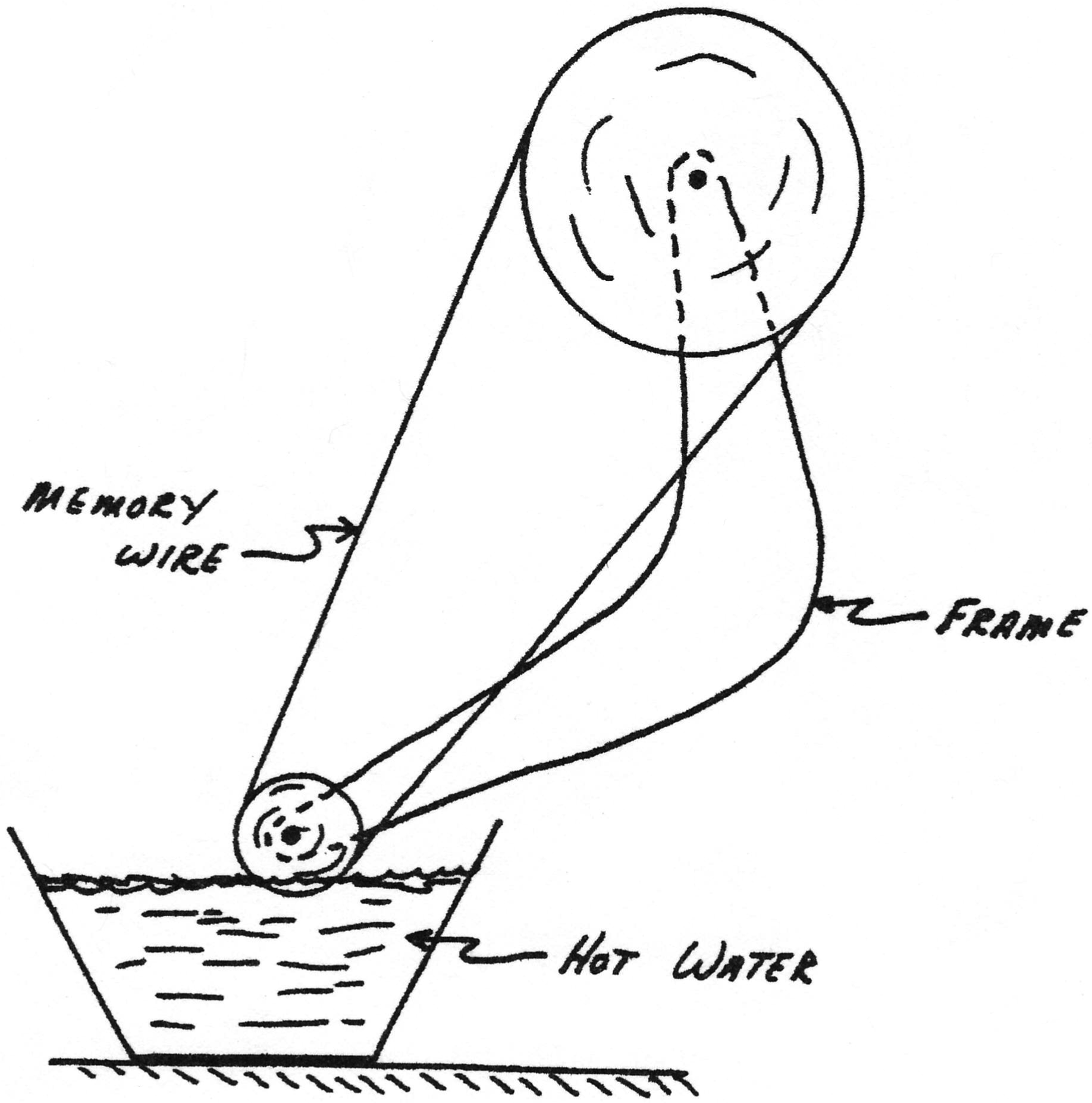February 01, 1988 Filed in:
Demo CornerPeter Levan, Lockerby Composite School, Sudbury
At last year’s conference in Sudbury, Al Hirsch demonstrated his icemobile
1 and I mentioned the action of a thermobile
1. Some people were interested in more explanation and information on these little toys and the physics behind them.
The secret is in the alloy of the wire that turns the pulleys. This alloy, Nitinol (Nickel Titanium Naval Ordnance Laboratory), has a curious property. It can retain an apparently plastic deformation if held below a critical temperature, T
c, but if it is heated above this temperature it returns to an earlier shape, a shape given to it by special heat treatment. For example, if a wire is manufactured straight, and T
c is 35°C, then at 20°C it might be quite flexible, while at 50°C it will straighten itself to its manufactured shape exerting some force in doing so.
Refer to the schematic diagram of the thermobile. The Nitinol is a continuous loop around two pulleys. The lower, brass pulley, is immersed in warm water at a temperature greater than T
c, while the upper pulley is at room temperature. The engine is given a turn to start it (in either direction). The pulleys of the engine now will continue to turn.
The power that runs this comes from the strong internal straightening force in the wire as the wire leaves the small pulley in the warm water. The wire “remembers” that it was originally manufactured to be straight. This power isn’t balanced off by the power needed to bend the wire because the wire is bent at a temperature below T
c. The overall effect is to make the small pulley rotate.
Since it’s not easy to see how a straightening wire makes a pulley rotate, think of it this way
2. If you wrap a piece of ordinary spring wire around a spool and you hold one end of the wire and release the spool, say on a table, the spool will rotate and be able to do work.
Metallurgists explain the wire’s action by describing a phase transition at T
c which involves a change in crystal structure. As the wire is heated above T
c, lattice shears occur and the alloy’s crystal type and dimensions change.
From the standpoint of physics teachers this is a super toy. Here is a device that easily illustrates the major principles of engines…the need for hot and cold reservoirs, and use of heat energy to do work. It can certainly be compared to other forms of engines in terms of efficiency, and work output. Perhaps this topic could make an interesting science fair project for your student.
 Schematic diagram of a thermobile
Schematic diagram of a thermobile
References
- Both devices are produced by Innovative Technology International Inc., 10747-3 Tucker St., Beltsville, MD 20705, for about $30 US
- H. Richard Crane, Physics Teacher, 23, 238 (1985)
- Ahmad A. Golestaneh, Physics Today, 37, 62 (1984)

Column Editor: Ernie McFarland, Physics Department, University of Guelph, Guelph, Ontario, N1G 2W1 Tags: Energy


